Welcome to Part II of a three-part series in which I’ll share an improved method of determining standings gain points factors. In the first part of the series we looked at the difference between my old method of calculating standings gain points factors and the improved approach suggested by Art McGee in his book, How to Value Players for Rotisserie Baseball.
In this part of the series I’ll explain how to implement the SLOPE function McGee suggests.
The SLOPE Function
The SLOPE function interprets a set of data points and returns the slope of the linear line-of-best-fit for the data. The function requires two inputs:
- The Y-values of all the data points
- The X-values of all the data points
Again, we’re back in high school math class (or earlier?). The Y-values (vertical axis) will be the actual accumulated statistics for each team in the league for the category we’re measuring.
The X-values (horizontal axis) will be the rotisserie points earned for each team.
For example:
| Rotisserie Points (x-values) | Home Runs (y-values) |
|---|---|
| 12 | 291 |
| 11 | 287 |
| 10 | 281 |
| 9 | 274 |
| 8 | 272 |
| 7 | 267 |
| 6 | 263 |
| 5 | 261 |
| 4 | 244 |
| 3 | 239 |
| 2 | 234 |
| 1 | 191 |
Let’s Put This Into Excel
You can see the data entered into Excel below.
Given this exact set of data, the formula used in Excel to calculate the slope is:
=SLOPE(B2:B13,A2:A13)
A More Comprehensive Example
This is only the home run data for one season for one league. In order to calculate more accurate SGP factors we should be including multiple years and/or leagues and we also need to perform these calculations for many different statistics (not just home runs).
A more thorough example Excel file that contains several years of data and the SLOPE calculations for the different years can be found below. It’s not my prettiest work, but this is a file you only need to be in once a year, when you’re updating your SGP calculations for an upcoming season. You can download the file using the ExcelWebApp toolbar below the spreadsheet.
WHAT’S COMING?
In the final part of the series I’ll take a deep dive into how these changes in SGP calculations affect our end rankings.
Want More In-Depth Analysis Like This?
Thanks For Reading
Stay smart.
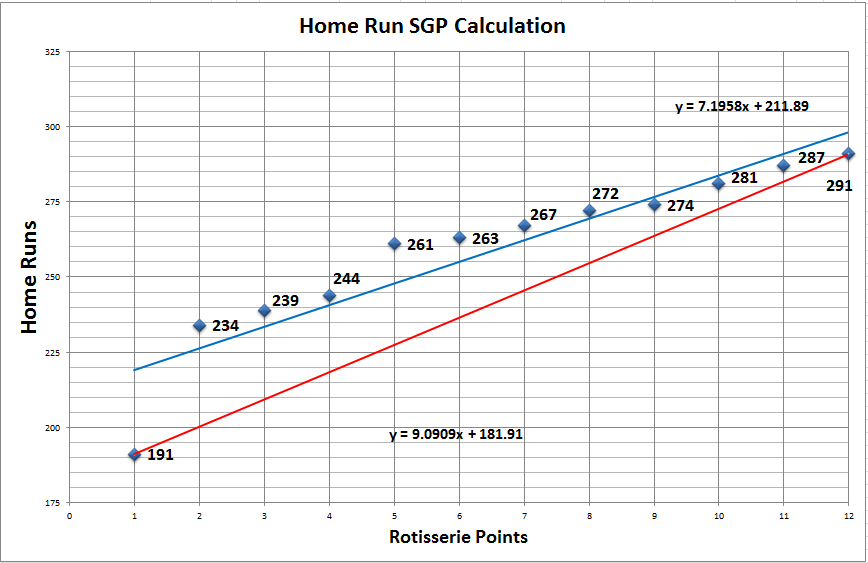

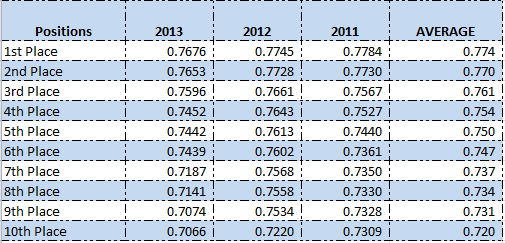


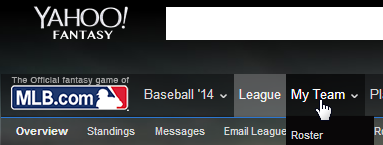

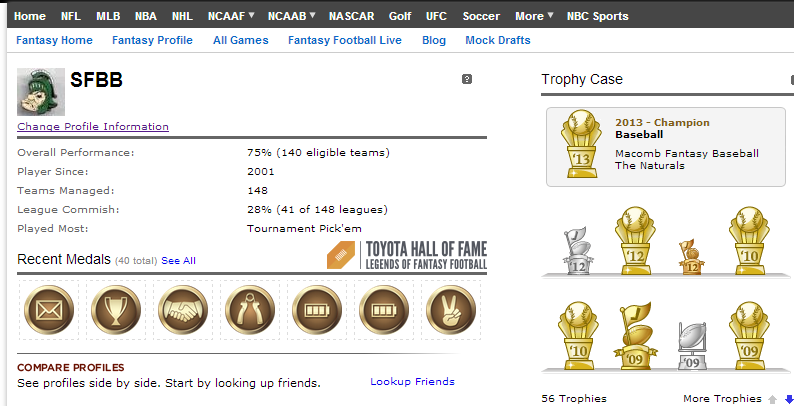

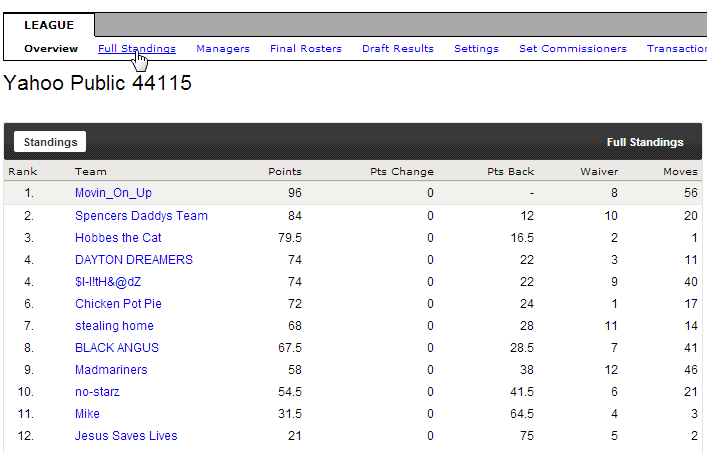
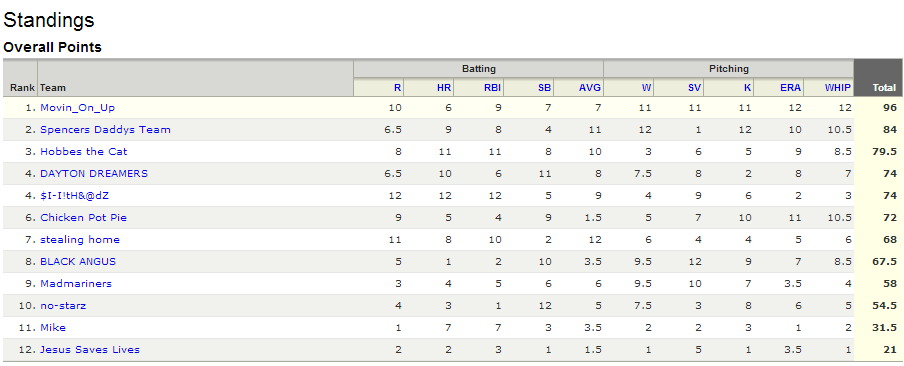 And the accumulated team stat totals are at the bottom.
And the accumulated team stat totals are at the bottom.

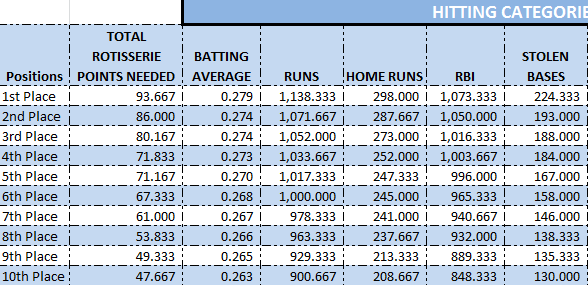
 Or use the buttons below if you'd like to purchase the guide now for $9.99.
Or use the buttons below if you'd like to purchase the guide now for $9.99.

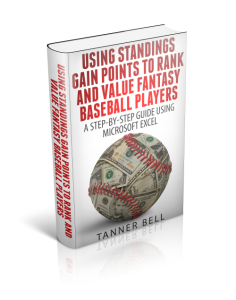 I’m very happy to announce that I’ve just finished the “missing pieces” to the “Create Your Own Fantasy Baseball Rankings” guide.
I’m very happy to announce that I’ve just finished the “missing pieces” to the “Create Your Own Fantasy Baseball Rankings” guide.